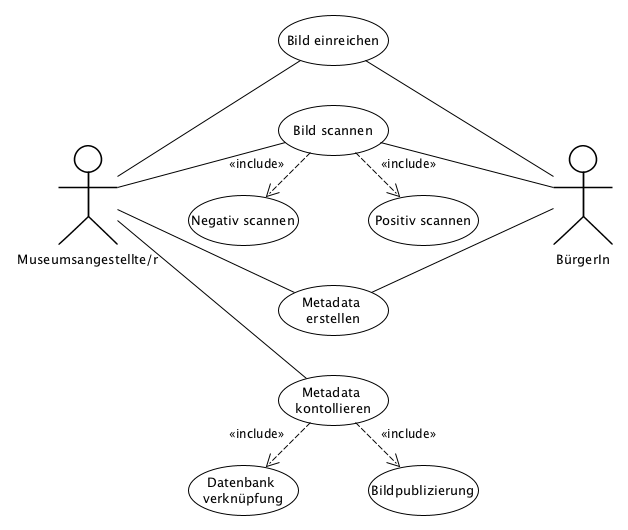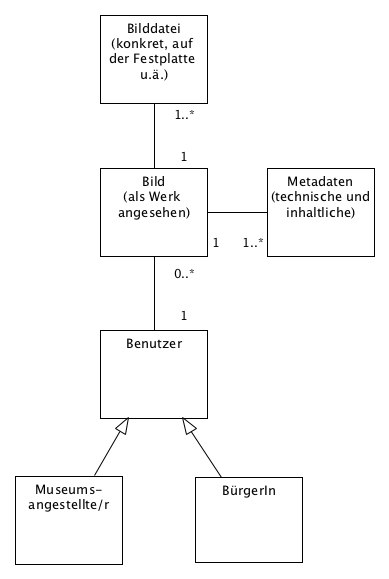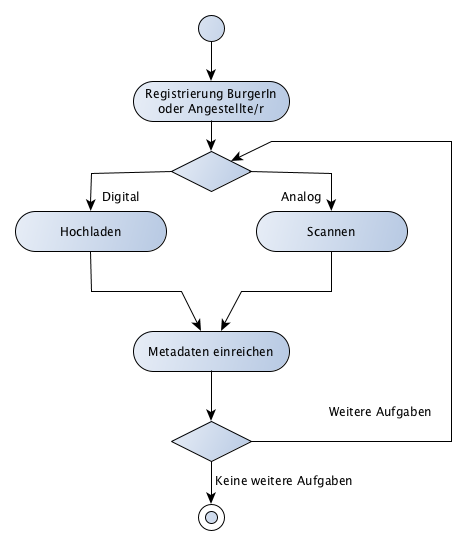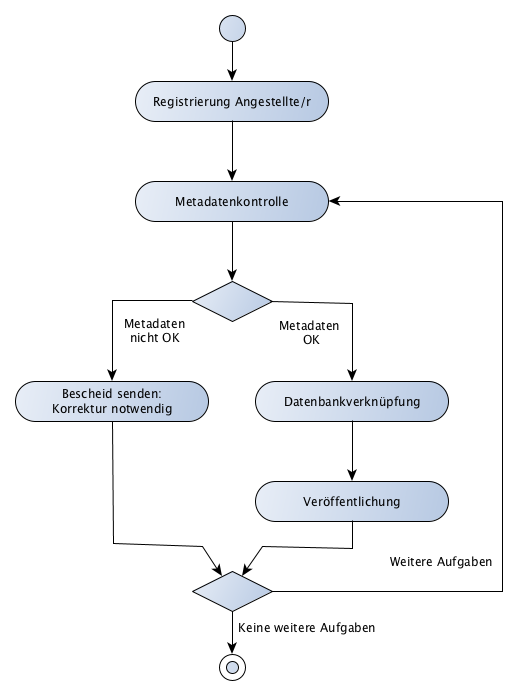Lecture 10. Januar: Hauptgebäude, Hörsaal VIII
Folien
Aufgaben – Modellierung
Einreichung: 19. Dezember vor 20:00
Kommentaren in der Vorlesung 20. Dezember
Hintergrund
Ein Kunstmuseum plant die Entwicklung eines Bildverwaltungssystems für Architektur, Monumente und andere Kunstgegenstände. Durch eine Informationsveranstaltungmit der Museumsleiterin haben Sie eine kurze Einführung in die Problematik erhalten.
Problembeschreibung
Das Museum wünscht ein System, mit Hilfe dessen sowohl Museumsangestellte, als auch interessierte Bürgerinnen und Bürger Bilder von Kunstwerken einreichen können.
Das System soll zum einen dazu dienen, digitale Bilder über eine einfache Schnittstelleeinzureichen. Zum anderen sollen Scan-Stationen für analoge Positiv- und Negativbilder in den Arbeitsprozess einbezogen werden. Die Inhaltsanbieterinnen und -bieter sollen Zugang zu einem Computerwerkzeug für die Erstellung von Meta-daten haben. Diese Metadaten werden später von Museumsangestellten kontrolliert und mit einer Datenbank verknüpft, bevor die Bilder online veröffentlicht werden.
Ebenfalls notwendig ist ein integriertes System für die Speicherung der anfallenden Daten.
Ihre Aufgabe
Formulieren Sie einen ersten Modellversuch für diesen Problemkomplex: Erstellen Sie ein vorläufiges Model und beschreiben Sie den Modellierungsprozess in Text und UML-Diagramme zusammen mit textuelle Beschreibungen.
Lösungsvorschlag
In this solution I focus on the concrete wording in the task description and try to make models which can help us (me as an analyst, the museum people, representatives of the user group and possibly other stakeholders, possible developers) agree on the basics of what is wanted. Once these models are modified and agreed on in principle we can then develop them into something more detailled and concrete, before the development of the first prototype system starts.
Given an agile methodology, which will be a natural choice for this type of project, the model will be adjusted several times during the development cycles. However, agreeing on the very basic structure from the outset can help us avoiding fundamental changes in the model later. Such fundamental changes after development has started often delay the project as it usually leads to changes not only within modules but also in he interaction between them.
Thus the four figures below are tentative diagrams meant as a starting point for discussions within the project group and the basis for discussion with the larger community involed in this project.

Use case diagram



Literatur
1. CRM
You should either read pages i-xxiii from:
Definition of the CIDOC Conceptual Reference Model. Version 6.2.3, May 2018. Available online from: http://www.cidoc-crm.org/versions-of-the-cidoc-crm
or pages 7-39 from:
Definition des CIDOC Conceptual Reference Model. Version 5.0.1, autorisiert durch die CIDOC CRM Special Interest Group (SIG). ICOM Deutschland, 2010.
Available online from: http://www.cidoc-crm.org/translations2
2. UML
Balzert, Heide. Lehrbuch der Objektmodellierung : Analyse und Entwurf mit der UML 2. 2.Aufl. München : Elsevier, Spektrum, Akad. Verl., 2005.
Ch. 1–4 (pp. 1-216)
3. Modelling in digtial humanities
McCarty, W. (2005). Humanities computing. Palgrave Macmillan, Basingstoke. Chapter 1: Modelling, pp 20–72. In Ilias.
Ciula, A. and Eide, Ø. (2017). Modelling in digital humanities: Signs in context. In Digital Scholarship in the Humanities, 32.suppl 1: i33–i46. https://academic.oup.com/dsh/article/32/suppl_1/i33/2669802